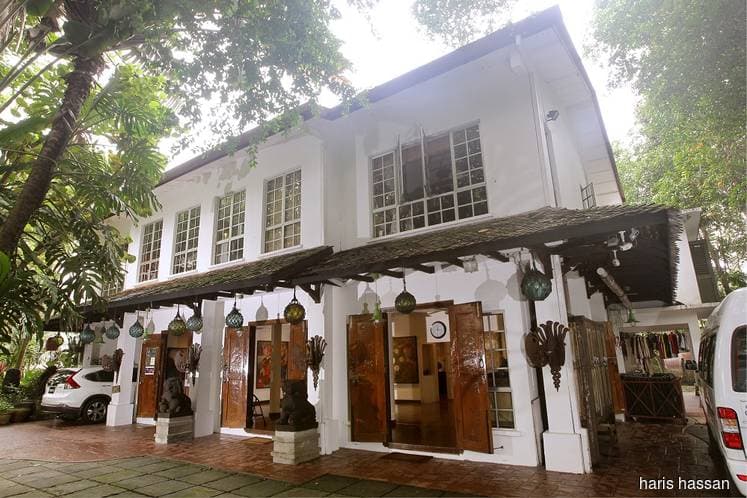
THE leafy enclaves surrounding Lake Titiwangsa hide some of Kuala Lumpur’s grandest abodes, including Sutra House, the Sutra Foundation’s home to the arts.
Sutra House has played host to a number of artistic endeavours over the years that cut across cultures, countries, media and disciplines. These include degustation menus by acclaimed chef Isadora Chai, performances by celebrated artistes and visual art exhibitions that feature works by both local and foreign collaborators.
What these eclectic mixes of art forms have in common, says Sutra Foundation chairman and artistic director Datuk Ramli Ibrahim, is that they stimulate the different senses, or “rasa” (taste). He draws parallels to the Indian “thali” (plate), which features a tableau of flavours — salty, sweet, sour, spicy — that provide a balanced meal.
Sutra House was not always the charming, leafy abode to the arts that it is today.
The house, which was built in the 1960s, was acquired by Ramli’s father for investment purposes. Some of its more notable tenants included members of the diplomatic corps with the Indonesian Embassy.
However, the property’s typical tenants were contractors and labourers, who took up rooms within the house. When Ramli finally inherited it in 1983, it was in quite a state of disarray. The home was badly in need of repair, and squatters had set up residence in the garden.
The dance luminary recalls with some amusement how he discovered the extent of the property’s land area. After a fire had ravaged the trespassers’ tenements and forced them to flee, he had engaged a surveyor to discover the true boundaries of the land as he planned to build a fence.
It turned out that they had been occupying garden space that had been rightfully his. While contractors advised him to even out the slope, he recognised in its natural contours the ideal site for an amphitheatre.
The amphitheatre, which can seat 180 to 200 people at a time, was initially built with salvaged wood, primarily railway sleepers taken from an old Keretapi Tanah Melayu station that was shut down years ago.
As maintaining and protecting the wood against our moist tropical climate proved costly, the stage was eventually rebuilt with cement.
Amid Sutra House lie little odes to sustainability featuring wood. There are the cream-coloured room doors salvaged from the old Majestic Hotel, which has since transformed into the National Art Gallery.
Repurposed timber also features prominently in furniture, fittings and carvings, and is best perceived in the delightful gazebo tucked in one nook of the garden.
All the salvaged wood pieces came from the collection of Sivarajah Natarajan, a trustee of the Sutra Foundation. An acclaimed visual artist and award-winning set designer, Sivarajah had amassed this collection of old quality wood since the early 90s.
“Wood is becoming increasingly rare,” he says with a smile, as if acknowledging the irony that wood is essentially sustainable if demand does not outstrip supply.
However, the bronze (and steel and glass) age is dawning upon Sutra House. The dreadlocked Sivarajah explains that he is replacing the decaying wood with steel structures, while the new art installations that adorn the house are now made of glass and bronze. “I’m entering a new phase,” he chuckles.
One can only anticipate with excitement what Sutra House’s next incarnation will be.
Sutra House:
- 12, Persiaran Titiwangsa 3, Kuala Lumpur
- Contact: www.sutrafoundation.org.my
This story first appeared in EdgeProp.my live! magazine. Download a FREE copy of live! magazine here.